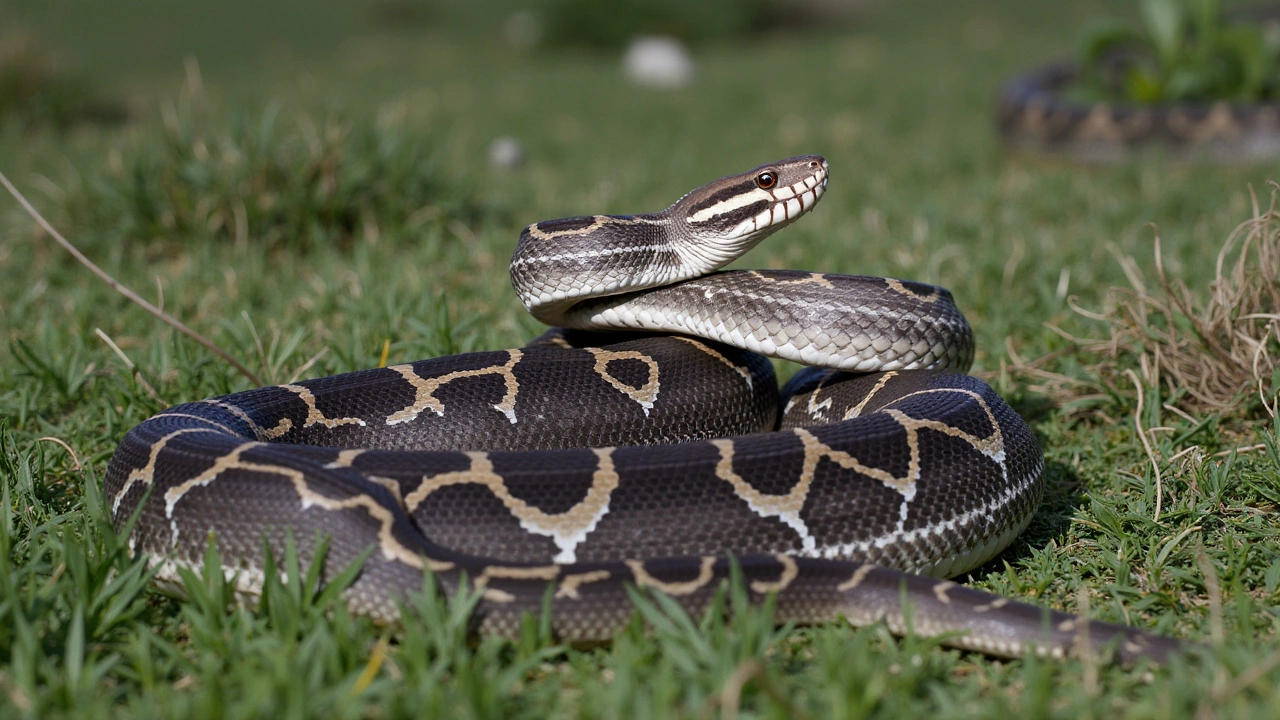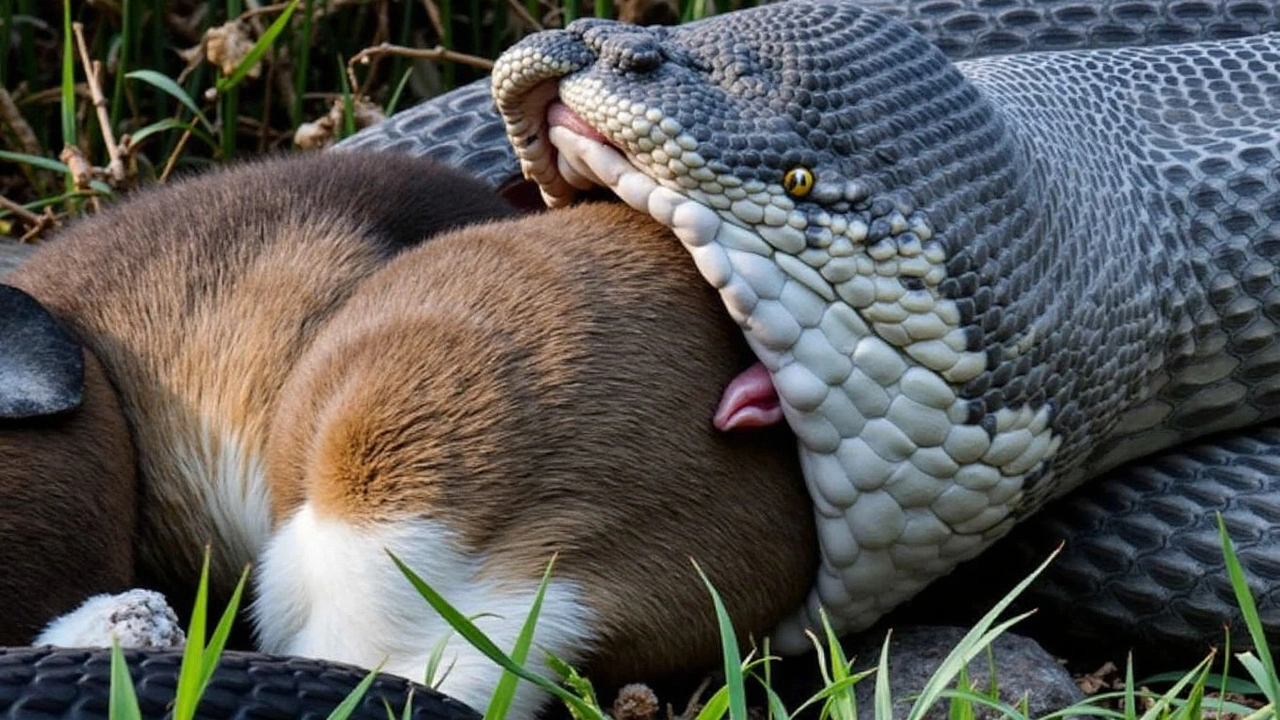The Astonishing Burmese Python: Predator of the Everglades
In a groundbreaking encounter that reshapes our understanding of the animal kingdom's hierarchies, a Burmese python was witnessed swallowing an entire deer in Florida. This incredible discovery offers a stark picture of the profound effect these reptiles have on the balance of wildlife in the Everglades. Two devoted researchers, Ian Bartoszek and Ian Easterling, who are passionate about protecting local ecosystems, found the reptile in action. The encounter wasn’t just serendipity; it was part of an ongoing study by the Conservancy of Southwest Florida to monitor and understand the invasive impact of Burmese pythons, introduced to Florida through the exotic pet trade in the 20th century.
Stretching the Limits: The Burmese Python’s Feeding Mechanics
What caught the world’s attention wasn’t just the act of the python consuming prey, but the sheer size and mechanics involved. The snake in question was a 14.8-foot, 115-pound female that managed to devour a white-tailed deer weighing 77 pounds. The arduous process, as observed, required the python to stretch its jaw to an alarming width of 10.2 inches, nearly 93% of its maximum capacity. This fascinating display challenges prior perceptions about the snake's biological limits concerning prey size. As much as this spectacle amazes us, it also serves as a grim reminder of how such capabilities can disrupt established ecosystems.

Invasion of the Everglades: A Perilous Balance Tip
Burmese pythons are originally from Southeast Asia, yet they found a home in Florida due to the thriving exotic pet trade of the 1970s and 1980s. Released into the wild, either accidentally or irresponsibly by pet owners, these magnificent creatures embarked on a journey that would lead to the decimation of local wildlife. The relative absence of natural predators in the Everglades allowed them to flourish uncontested, preying on native species that never evolved defenses against such a formidable foe. Study observations indicate these snakes have caused the decline of several mammal species in the area. This ecological imbalance represents not just the loss of biodiversity but paints a bleak picture for the stability of the entire ecosystem should measures not be taken to control their population.
The Role of 'Scout Snake' Research in Population Management
Recognizing the challenge presented by these invasive reptiles, the Conservancy of Southwest Florida has initiated innovative strategies to manage their populations. Through the use of a 'scout snake' program, male pythons are equipped with radio trackers during mating seasons. This strategy unveils the whereabouts of fertile females, crucial in hampering the reproductive expansion of the species. Eliminating egg-laying females provides a direct intervention in slowing population growth. These efforts reflect a targeted approach to mitigate the problem, attacking it from its reproductive base. This research has altered existing models on what these snakes can consume, reshaping strategies on how best to maintain the delicate balance of the Everglades' ecosystem.
Altering Perspectives on Predator and Prey Dynamics
The impact of the Burmese python on native species in Florida extends beyond simple predation. The substantial consumption capabilities of these snakes mean they can prey on animals that would typically not fall victim to smaller predators. The example of the python swallowing a whole deer testifies to this, shifting our understanding of prey dynamics within the ecosystem. Such incidents illustrate an urgent need for continued research and strategic intervention to prevent further ecological degradation. Conservationists and scientists alike stress the importance of raising awareness about the invasive species plight, with the hope that better-informed policies can mitigate such issues on a global scale.
A Global Perspective on Invasive Species Control
The issue of Burmese pythons in Florida echoes a larger, global challenge of managing invasive species. Their presence reminds us of the delicate intersections between ecosystems and the perilousness of introducing non-native species into foreign environments. As the world continues to navigate these complexities, the focus must remain on sustainable methods to control such populations while preserving native biodiversity. Collaborative efforts between conservation groups, governments, and communities are vital in crafting solutions that apply both locally and globally. This situation is a clarion call to recognize the ecological havoc invasive species can unleash and the importance of responsible exotic pet ownership and trade regulations.

Future Directions and Technological Aids in Conservation
The fight against the Burmese python invasion is ongoing, and technological innovations continue to emerge as vital tools in this battle. Advanced tracking devices, genetic studies, and AI-driven data analysis are just some of the cutting-edge tools being employed to gain deeper insights into python behaviors and their impacts. With these tools, conservationists are better equipped to predict and counteract the snakes' invasive effects. As the intersection of technology and ecology strengthens, there is hope that the narrative of invasive species like the Burmese python can shift towards one of control and harmony, preserving the rich biodiversity of regions like the Everglades for future generations.






